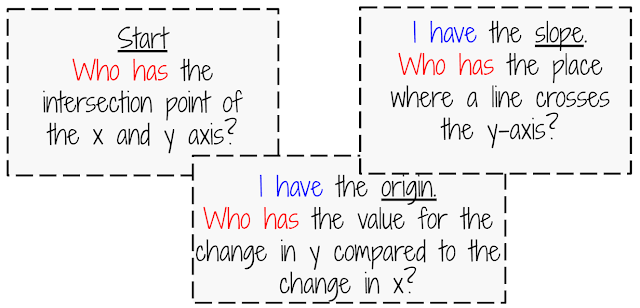The right answer should not be all we care about in math class. As teachers, when we only focus on being right vs being wrong, we send the message to students that being right is all that matters. The process, the thinking, the struggle, the journey to get there... all of that is majorly important in addition to finding the right answer. So we have to pause and reflect. Do our activities align with this idea? If students are going through an activity to practice or reinforce a skill, are we only having students find the answer and then move on? Where could we grow from here?
This is why the idea of Which One Doesn't Belong, and the thinking and justification skills that go along with it, is one of my favorite ways to get students looking at their work and their answers and talking about more than just the answer being right or not. I have posted about this before, so
check this out first. In working with a team of Integrated High School Math II teachers this month, I designed an activity about factoring quadratic trinomials using the WWDB framework.
Check out this first station:
At first glance, you could start by saying that A doesn't belong because it's the only quadratic trinomial with a positive b value. That's true! And if a student said that to start, I would be thrilled that they are able to identify the different coefficients in a quadratic trinomial and recognize that the sign belongs to the b value and matters. Let's keep diving in....here are the factored forms...
Next, you could say that C doesn't belong because the two factors are not identical like in A and B. If a student was using their new vocabulary from this unit, they might say that C is not a perfect square trinomial, which would just about make my heart burst with joy.
You could also say that A doesn't belong because it doesn't have a factor of (x-3) like B and C do or that B doesn't belong because it doesn't have a factor of (x+1) like A and C do.
Here's the thing, you can say any of them don't belong for any reason that mathematically makes sense.
I want students talking. I want them making a claim and backing it up with mathematical evidence while using academic vocabulary. This activity not only allows students to practice factoring, but explore and engage with quadratic trinomials in addition to finding a right answer.
Here is a
link to the entire slideshow. The trinomials get more interesting with more complex differences. Make a copy and edit as your heart desires!







.png)




.jpg)
.jpg)










